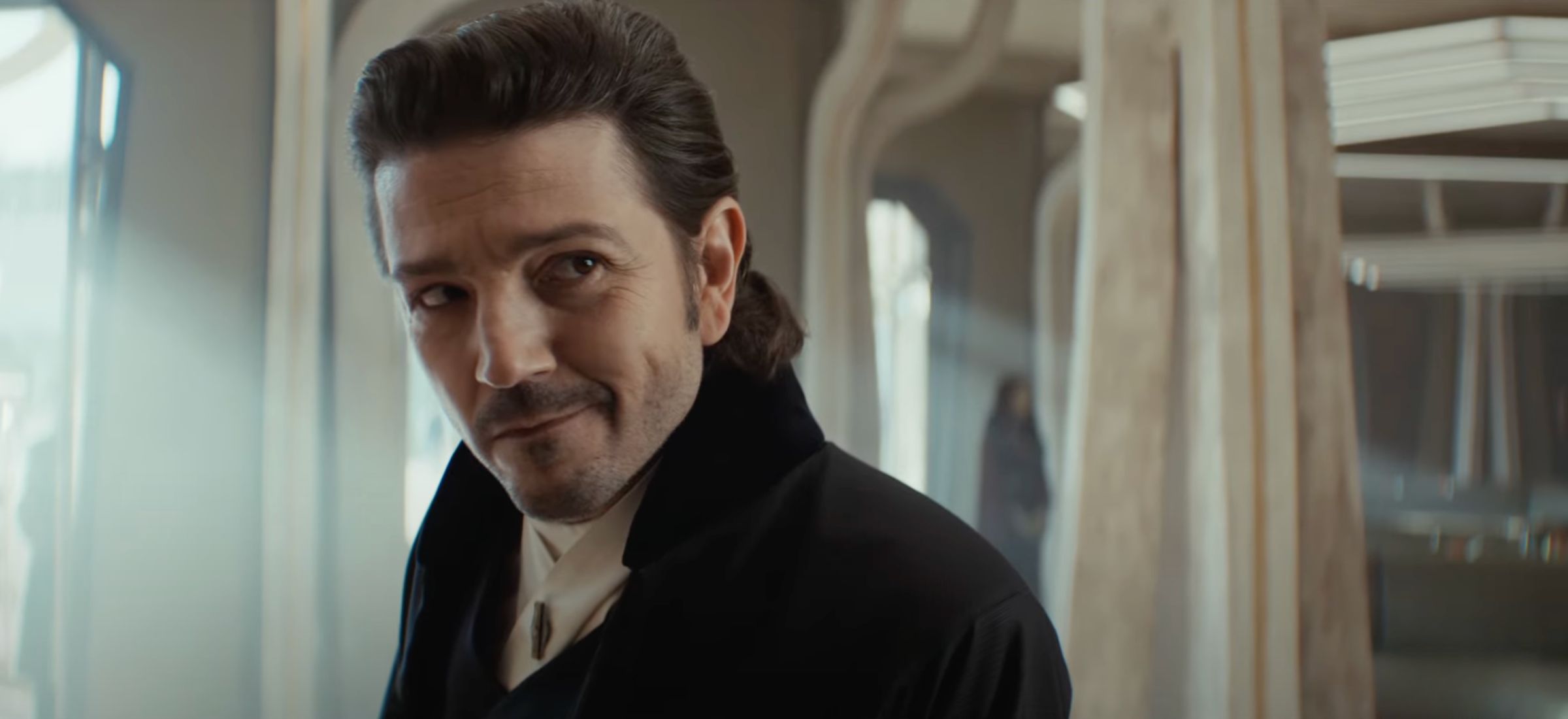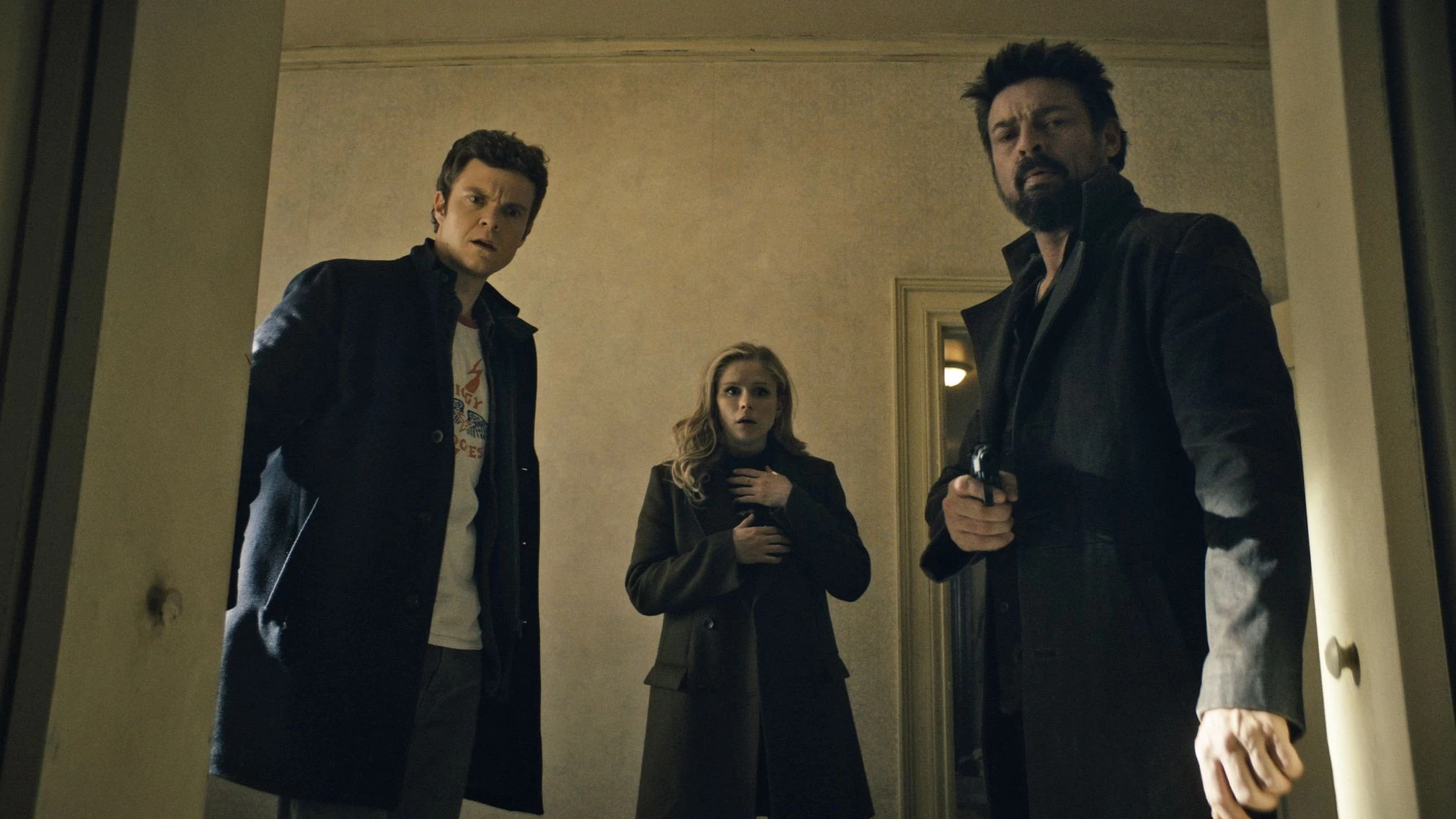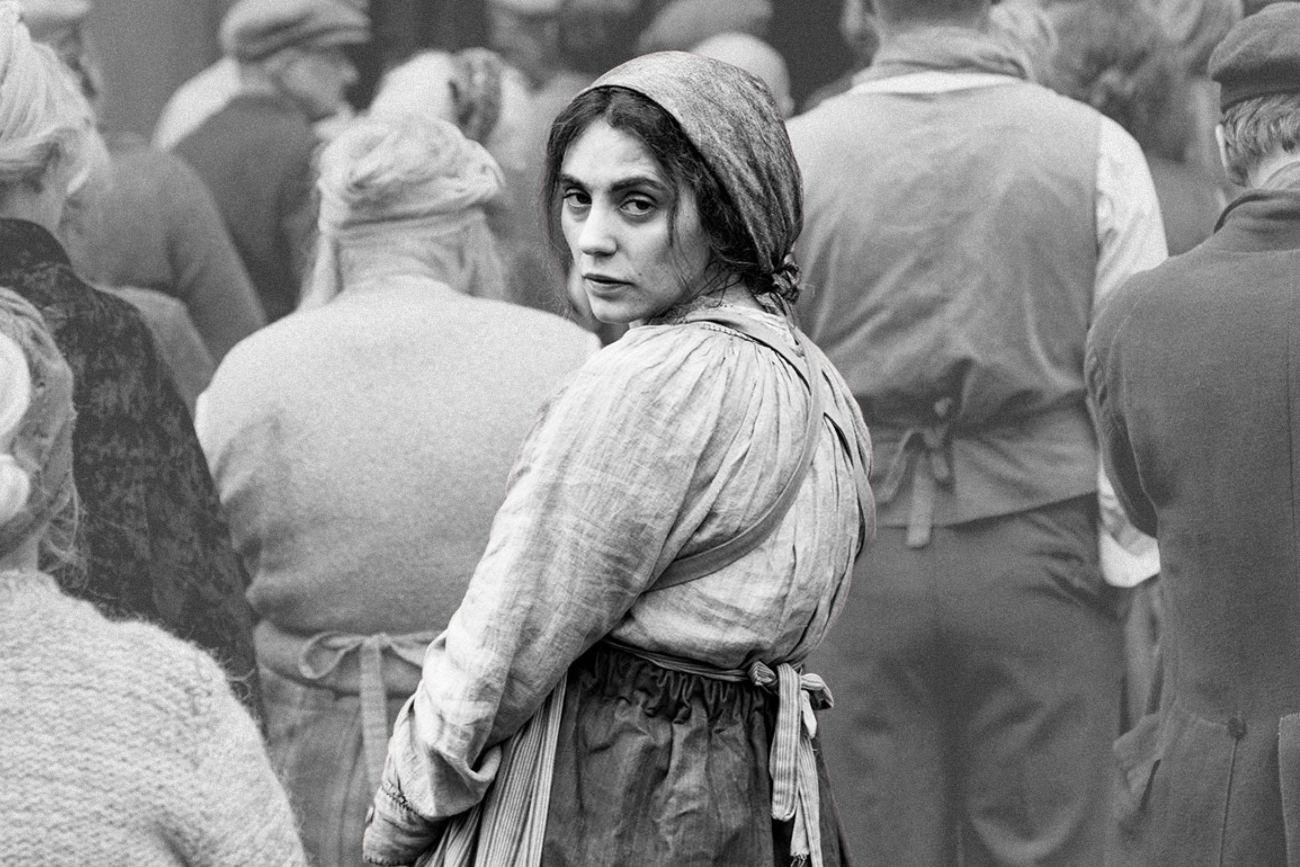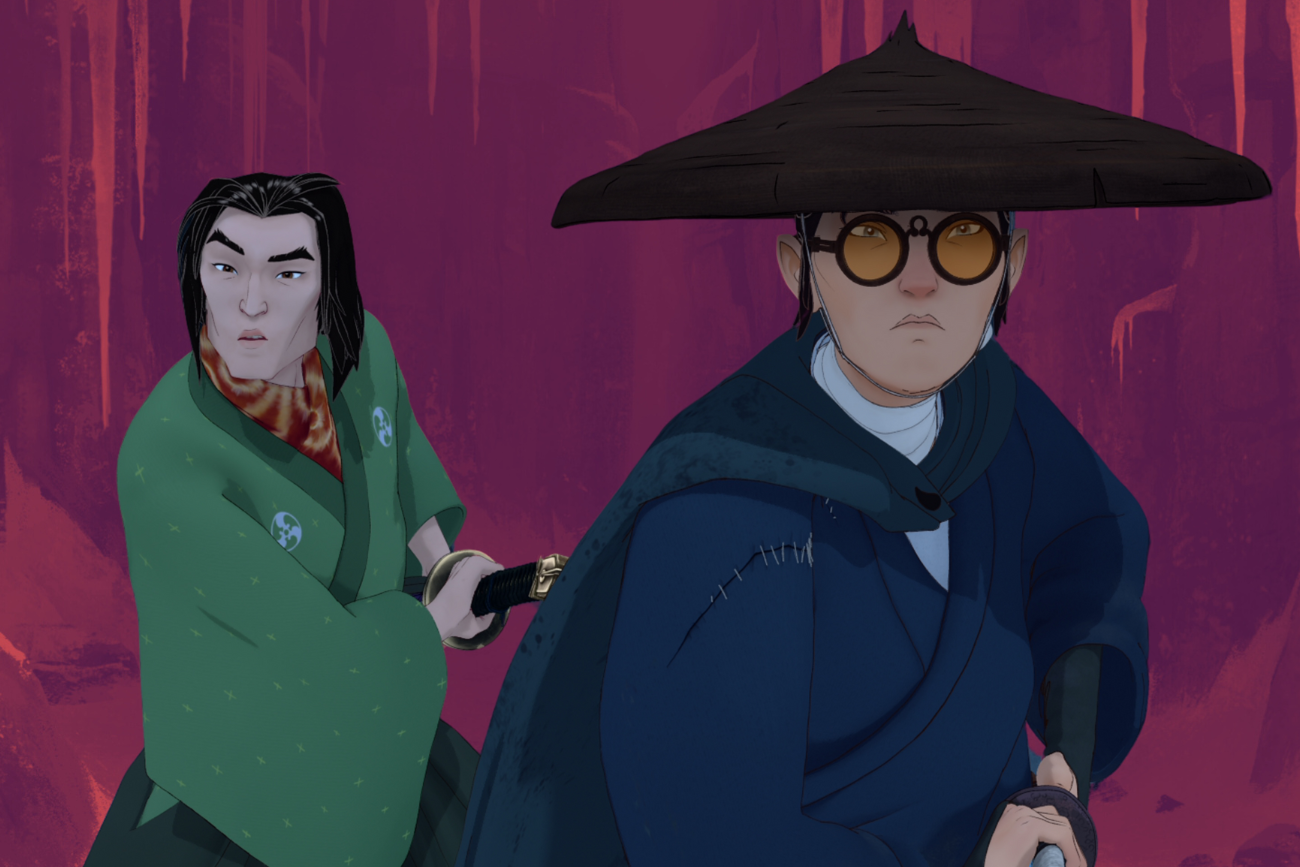People have been noticing the similarities between Twin Peaks’ eccentric tiny town and Gilmore Girls’ Stars Hollow for years. There’s the shared cast (Sherilyn Fenn and Mädchen Amick, in Gilmore’s first run, with Ray Wise joining later in the revival). There’s the direct callouts to David Lynch’s work (now a TikTok audio fave). And there’s of course the love of coffee, pie, and spending quite a few time in the town diner.
This is not purely by accident.
“There’s nothing of David Lynch’s that I’ve seen — even stuff that I’m kind of like, Well, I don’t know what the fuck that was — you never walk distant feeling like, Well, I wasted those 2 hours I’ll never get back. You were in for something,” Gilmore Girls creator Amy Sherman-Palladino tells Polygon. She, like her husband and fellow Gilmore Girls co-executive maker Daniel Palladino and many another writers, felt the electricity of David Lynch and Mark Frost’s procedural send a shock through the strategy of television.
“It just hit me at the right minute in my life, in my increasing as a author — it landed, in a way. It was so impactful. You stumble across things in a certain time in your life, and they will always mean the most to you due to the fact that it was erstwhile you were the most open to being affected by it. […] That’s what the first Twin Peaks did for me.”
In honor of the first Twin Peaks Day without David Lynch, the Sherman-Palladinos sat down with Polygon to talk through how the small northwest community of duplicate Peaks influenced the Connecticut hamlet of Stars Hollow, and what they learned from David Lynch erstwhile making Gilmore Girls.
[Ed. note: This interview has been edited and condensed for clarity.]
Tell me erstwhile you fell in love with David Lynch’s work, either as your first foray into it, or the first thing that truly hit you, like, Holy shit.
Amy Sherman-Palladino: Well, Dan, you most likely knew about David Lynch before I did.
Daniel Palladino: Yeah — I forget what order these movies came out, but Elephant Man and Blue Velvet; I love both of them. And then I was working at ABC, actually, erstwhile Twin Peaks came out, and quite a few us writers loved it. And we were already proceeding from the executives that they didn’t know what the hell it is, but they put it on. It became this phenomenon, but they didn’t realize it, which is very common in the tv business. But definitely, definitely Twin Peaks, Blue Velvet, Elephant Man were the ones.
And he was just a cool — I even started buttoning the top button on my shirts, on my long-sleeve shirts, due to the fact that David Lynch did it.
Sherman-Palladino: That’s truly weird. Seriously. I don’t even want to know that.
Palladino: I get the sense he might’ve had tailored shirts and I didn’t.
Sherman-Palladino: I was on Roseanne, and I bought [The Secret Diary of Laura Palmer] and drove up to a execution hotel and stayed there for 2 days reading Laura Palmer’s diary over the weekend — which made me feel highly young, due to the fact that all the remainder of the guys on staff were rather horrified actually by the concept of going to a seedy hotel and reading Laura Palmer’s diary.
But it was the first time that I think I realized that tv could have a mood, and could have kind to it. due to the fact that tv was very flat, even though there was good TV! There were good tv shows on. It was flat — it was a flat style, it was very formulaic. There was nothing that was terribly, terribly surprising. It was just like: Is this a good cop show or a bad cop show? And the full thought of introducing music, and lighting, and weird characters, and a location that was as much a part of the show as anything else — due to the fact that tv wasn’t about location then. It was about backlots. That’s 1 thing that erstwhile I did Gilmore Girls — on a really much smaller scale, due to the fact that we had $4 to do Gilmore Girls — but it was the thing that stuck.
What were you seeing in Twin Peaks that you wanted to build off and take into your own work?
Sherman-Palladino: Well, it was giving your show a sense of place. It turned out to be kind of the secret weapon of Gilmore Girls, even though at the time, the studio and the network were not at all that curious in sense of place. For them it was like: You’ve got 2 beautiful girls and they walk in a ellipse and they talk to each other. That’s all we care about.
It was the town — that sense of where Lorelei took Rory to be raised, and what that town was, and the seasons and the feel of the place that she wanted to live — that I think actually set Gilmore Girls apart, as much as anything else, due to the fact that it had a place that you longed to live in. And I think that in much different ways, erstwhile you watch Twin Peaks or truly any David Lynch [project], the sense of place was so strong, you felt it. And you wanted to either visit there, or if you ran across a creepy place in your life, you’re like, This is very David Lynchian and I’d like to get out of here. I’m going to get murdered here.
So that kind of sense of place I think is something that straight affected Gilmore Girls, a 100 percent. It was fighting for being able to make a planet that was not just: And they’re outside! The little homicidal version of Twin Peaks was Stars Hollow. The characters were a small bent, a small off. Everybody was very intertwined; their fates were intertwined. Music was heavy crucial to Gilmore Girls. What the music was, what the music said, where the music was placed, who was playing it. The Troubadour was a little scary Julee Cruise in Stars Hollow.
And then we used, like… a bunch of his actors. [laughs] He just had that eye for individual that was odd; she was beautiful, but kind of weird. His eye for that kind of thing was just perfect. And it made you think about casting differently. It made you think about music, it made you think about sets differently and where you placed scenes. It just got in your brain.
Going beyond the callouts and the actor crossover, you’ve besides got Lesli Linka Glatter, who’s your pilot director. I’m curious how you worked with her to set the town apart right away, and if you had duplicate Peaks on the brain erstwhile you were working with her.
Palladino: Did Lesli direct episodes of Twin Peaks?
Sherman-Palladino: We had no idea.
Oh wow! Yeah, she directed stuff like “Cooper’s Dreams.”
Sherman-Palladino: Oh, she’s cool. Yeah, I wanted Lesli due to the fact that she was a dancer. She came from the dance world, and Gilmore is simply a very rhythmic piece, and it felt like it needed individual from that world. And in our experience, our most successful directors have always been — through Gilmore, through Maisel — have always been dancers, due to the fact that they come with that engine, that kind of rhythmic sensibility built in. So the dialog is second nature to them. But that’s why we went with Lesli. But now—
Palladino: Now we love her even more!
Sherman-Palladino: Yeah, she’s even cooler to us.
I thought it was specified a good choice, given that she’d directed on Twin Peaks and had Now and Then [a heartfelt, cross-generational film], which seemed perfect for what I’d have in head for Gilmore Girls as a concept.
Sherman-Palladino: We’re always very specific; we seldom have 3 different people we want for any part. It’s always: There’s 1 actor that’s right, there’s 1 manager that’s right. possibly we just have short attention spans and erstwhile we find something we don’t want to think about it anymore; that could possibly be it.
I don’t know that I set out to say this is going to be non-murdery Twin Peaks, but it just, [Lynch’s] sensibility and the importance that he plays as an artist in all of his movies, on mood, on music, on casting, on location, it was so crucial and it stayed with you. And I think that that just kind of seeps into your brain. So erstwhile you get a chance to do it yourself, you kind of know — even though the studio and the network is saying, Well, no 1 cares about the town. They only care that there’s 2 beautiful girls talking to each other — you kind of know that’s not true, that’s shortsighted. due to the fact that the reason that people are inactive talking about Twin Peaks or Blue Velvet [is] due to the fact that you see those images, you feel the wood, you odor the coffee, and you taste the cherry pie. It’s specified a strong impression that if that can leave that kind of impression on you, you want to be able to have your work leave that impression on individual else.


Truly large coffee — “damn fine” coffee, even — is simply a hallmark of both shows.Image: ABC and Image: Netflix
Twin Peaks feels like 1 of those shows that was sold as 1 thing but is smuggling in so much. evidently there are quite a few shows that are more straight “Lynchian” or Twin Peaks-y, but I think it’s 1 of those shows that’s influential due to the ways it’s so many things and can point to its influence in almost any show that came after. In many ways it’s clearly designed off of a soap pattern or something!
Sherman-Palladino: I frequently wonder how they sold it. They most likely said, “Well, advanced school girl gets murdered — it’s a execution mystery.” Like, how do you sale Twin Peaks? due to the fact that it’s so not a execution mystery; that was not at all what the show was. But that’s most likely what the network heard. Like, Oh, a execution mystery; like Jessica Fletcher, right? That’s a execution mystery.
Palladino: I think to me, the eventual influence of something like Twin Peaks is: The ones that are most likely least successful [are] the ones who tried consciously to be Twin Peaks. But I think that the kind of auxiliary influence that it had is in quite a few stuff. Everyone’s heard of Twin Peaks. Everyone kind of knows what Twin Peaks is. And I just think due to the fact that it was so different at the time, it just kind of entered the grammar and the DNA of writers, even if they didn’t truly know it. I know a lot have tried to do it over the years, and they’ve been very, very unsuccessful. And you can tell…
Sherman-Palladino: It besides gave writers quite a few false hope—
Palladino: [laughs] Any hope is false to us.
Sherman-Palladino: That you could do something first and peculiar and they would admit it, and let it thrive. And I think we coasted on that for many years before we realized that [laughs] it was just David Lynch that got it through. So thanks for that, David.
I mean, I see quite a few that same Trojan Horsing in Gilmore Girls, with respect to characters and quite a few the feelings, themes, and relationships that are knotty and complicated and refuse to settle into 1 thing or another. Where’d you get that kind of specifically tv plotting for building out those relationships?
Sherman-Palladino: Well, we were always very stingy — and I don’t know if it was Twin Peaks, necessarily. What Twin Peaks really gave you is the thought of: Don’t just presume you know where something’s going to go. due to the fact that that’s an easy thing to fall into. And at the time that we were doing Gilmore Girls, we were on a very circumstantial network, that they were very young people [focused] — Dawson’s Creek, Buffy, Smallville — and Gilmore Girls was just stingier with plot. I think that we just trusted that the characters were interesting in themselves, and the more that you got to know them and live in their world, the more you were connected to them.
And duplicate Peaks was a lot like that. You loved those characters. And after a while, it was almost like it kind of didn’t even substance who killed Laura Palmer. It just didn’t matter! And I was reading something recently, any small oral [history] that the network was saying to Frost and David Lynch, “Just tell us who killed Laura Palmer already!” But that’s not the point. That was just the catalyst to get us into this planet and to meet all these people, and to find out there’s so many another weird things going on here that have nothing to do with Laura Palmer. But also, the minute that we told people, that we tried to tie it up and say, “Here’s who killed Laura Palmer” — it was kind of over; the fun was over.
And we kind of felt that same way a small bit in Gilmore Girls, but just not so specifically. We never had 1 overarching storyline like that. But we did feel like the journey is the journey of the lives of these people. And if you love them, and if you’re invested in them, you didn’t request the specific, And then they show up, and then they get stuck in an elevator, and then they find out 1 of them is actually related to the another person. You didn’t request so much crazy story, due to the fact that life is enough.
I was besides very lucky, due to the fact that my first occupation was Roseanne, and that was very much weirdly storywise stressed on Roseanne, which was: Make the tiny big, make the large small. And I think that, whether or not David Lynch would say he would look at story, it felt like that was the way he would look at story. It was the tiny things that he wanted to look into and amplify — and especially in Twin Peaks, the large thing was the least crucial or interesting moment. It’s not the minute that they abruptly said it was Bob or whatever. It was the funeral; it was those another moments that stick in your head of how the characters were reacting to the tragedy that was there, and how it affected their own lives and relationships. That was the fun of Twin Peaks. And I think that they kind of knew, like, Well, let’s not bring this to a head, due to the fact that what’s the fun of that? Let’s just live here awhile.


















